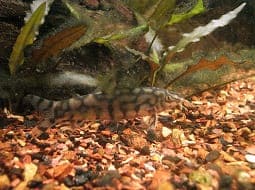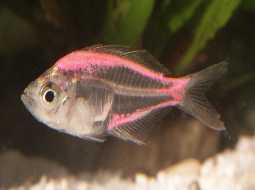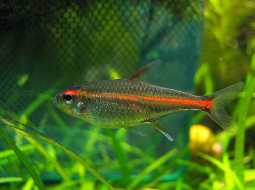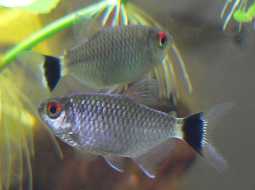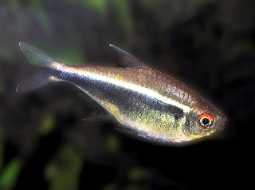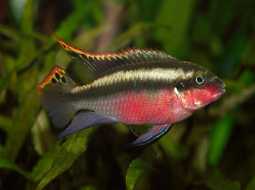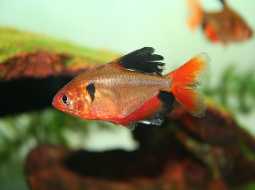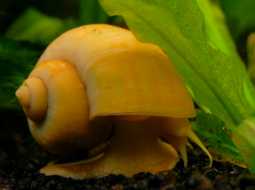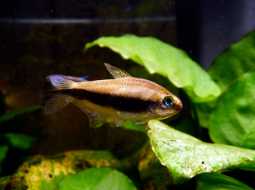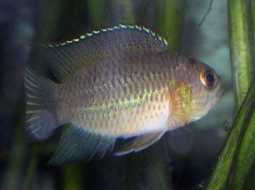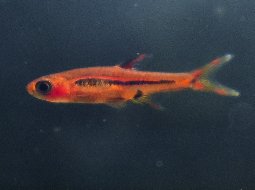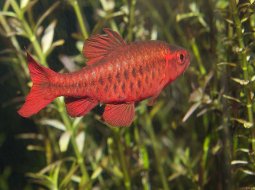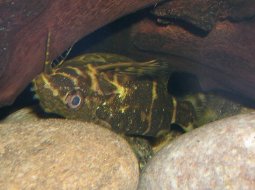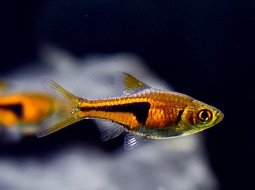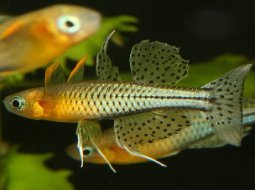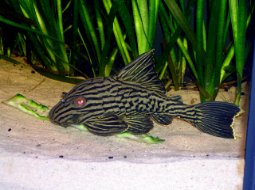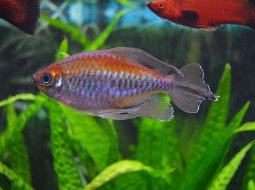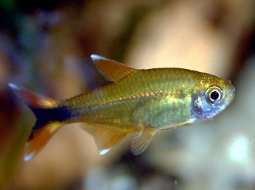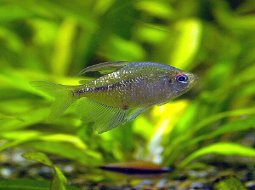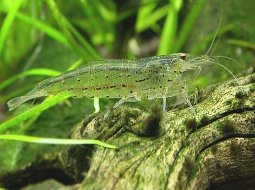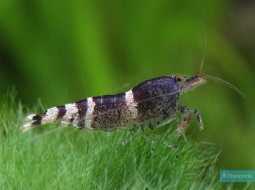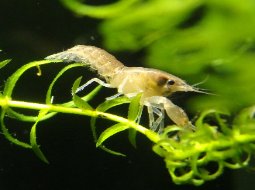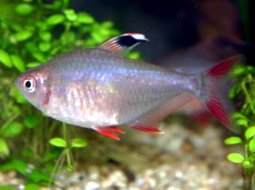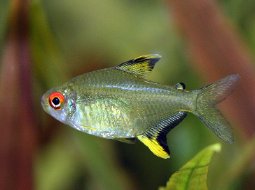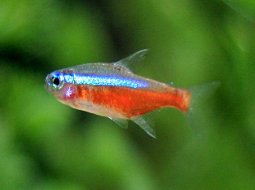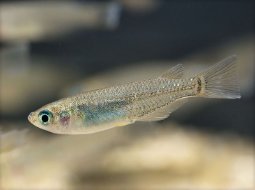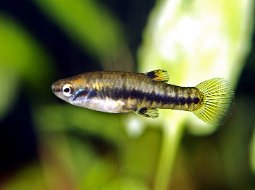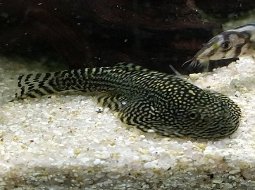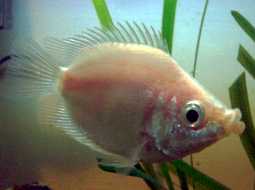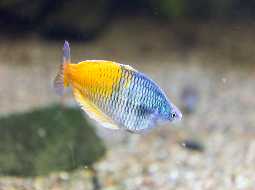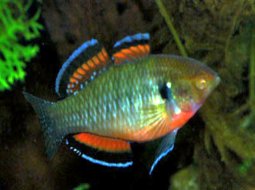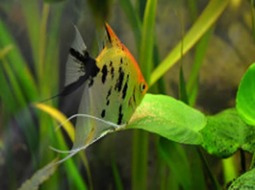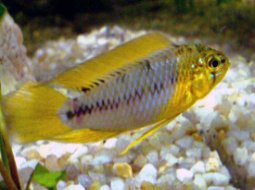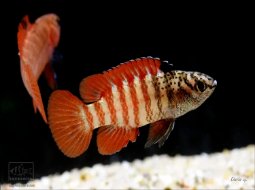
Loading Aqualapp ...
Care and Compatibility of Hatchet Fish - Thoracocharax stellatus
Introduction
The Thoracocharax stellatus, commonly known as the hatchet fish, is a tropical fish native to the river basins of South America. It is characterized by its unique and distinctive shape resembling the blade of a hatchet, hence its common name. They are small-sized fish with a slim and laterally compressed body. Their coloration is usually silvery with shiny reflections. They are known for their peaceful and sociable behavior and tend to swim in schools in the middle and upper regions of the aquarium. They enjoy exploring their environment and feel more secure when surrounded by other fish of their own species. In terms of feeding, they are omnivorous and accept a variety of foods. They can be fed with live foods such as mosquito larvae and daphnia, as well as high-quality frozen and dry foods. A balanced diet that includes proteins, vegetables, and vitamin supplements is important for their health and well-being.
Behavior
The Thoracocharax stellatus, commonly known as the hatchet fish, is a species of tropical fish native to South America. They are small-sized fish characterized by their unique and distinctive shape resembling the blade of a hatchet. They are peaceful and sociable fish that tend to swim in schools in the middle and upper regions of the aquarium. They enjoy exploring their environment and feel more secure when surrounded by other fish of their own species. They are omnivorous and accept a variety of foods, including live foods, frozen foods, and dry foods. It is important to provide them with a balanced and varied diet to maintain their health and vitality.
Sexual Dimorphism
Sexual dimorphism in Thoracocharax stellatus is minimal and difficult to distinguish. Both males and females have a similar appearance. During breeding season, they may exhibit more active courtship behavior.
Reproduction
Reproduction of the hatchet fish can be challenging in the aquarium environment due to their specific requirements. Pair formation is important for successful breeding. It is recommended to keep a group of young fish and allow pairs to form naturally. To stimulate spawning, water temperature can be adjusted and regular partial water changes can be performed. The pairs will deposit eggs on fine-leaved plants or a spawning grid. Once the eggs are laid, it is advisable to remove the parents to prevent them from consuming the eggs. The eggs will hatch after a few days, and the fry will need to be fed with small, high-quality foods such as infusoria and freshly hatched brine shrimp nauplii.
Aquarium Conditions
Thoracocharax stellatus is a tetra fish that requires a spacious aquarium with abundant vegetation as well as open swimming areas. It prefers soft and slightly acidic water. Aquarium décor should include floating plants and shaded areas. Maintaining water quality is important and providing a varied diet.
Feeding
The hatchet fish is an omnivorous fish and accepts a variety of foods. They can be fed with live foods such as mosquito larvae, daphnia, and brine shrimp. They also accept frozen foods such as frozen mosquito larvae, mysis shrimp, and cyclops. Additionally, high-quality dry foods such as flakes and pellets specially formulated for tropical fish can be offered to them. It is advisable to supplement their diet with vegetable foods such as algae flakes or spirulina to ensure balanced nutrition. Food should be provided in small portions that they can consume within a few minutes, avoiding overfeeding that can lead to issues of overeating and poor water quality.
Complexity
Caring for Thoracocharax stellatus is relatively straightforward. They are peaceful and social fish that adapt well to a variety of water conditions. They get along with other fish of similar size and are best kept in groups of six or more individuals. They require a balanced diet and a well-maintained environment.
In case you need more help, or if you want to know into any topic related to the Thoracocharax stellatus (Hatchet Fish) and even any other species you can use the forums to ask what you need.
To do an analysis more detailed about coexistence and behavior of Thoracocharax stellatus (Hatchet Fish) use the Aquarium simulation tool, if you do this you can test different ways to combine the Hatchet Fish with other fishes giving the dimensions and space on you aquarium, on this way you can known the optimal configuration for keep the fishes that you want.
You can also find out the 81 species compatible with the Thoracocharax stellatus (Hatchet Fish) can live together.
Note: The parameters of the water such as PH and temperature are also used to calculate the compatibility of the species.
Compatible species (81)
Compatible (68 Species)
Compatible without any restriction
They are school fish, it is recommended to combine several specimens of the same species.
Similar Sizes (6 Species)
They can coexist if they are the same size or very similar sizes, it does not work in all cases, there may be exceptions.
With Reservation (1 Species)
Compatible in some cases, it depends on the nature and personality of the fish.
Considerable size difference (2 Species)
They can coexist while they are similar in size or the size difference is not very abysmal, since as the fish grows it increases the chances of eating its partner that did not grow much.
Compatible if space is enough (4 Species)
They can coexist together if the aquarium they share is large and spacious enough for both species to feel good, as some fish may attack others to feel that they have little space and try to eliminate the competition.
Hatchet Fish
Thoracocharax stellatus

- Ph: 6.5 - 6.8
- Temperature (c°): 26 - 33
- Measures: 6 cm - 8cm
- Aquarium Capacity:
12 Liters - 3 Gallons - Alimentación: Carnivores, Omnivores
- Colores: Gris, White
- Comportamiento: Jumper, Peaceful, Shoal
- Habitad: American
- Preferencias del Acuario: Logs, Natural plants, Rocks
- Tamaño: Small
- Taxonomía: Fish
- Tipo de Agua: Sweet water, Tropical waters
- Velocidad de nado o movimiento: Normal
- Zona de Nado: Swim in the middle of the aquarium

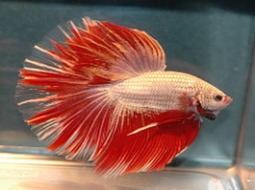
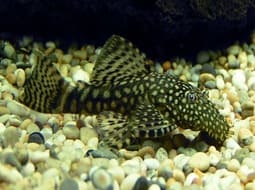

.jpg)
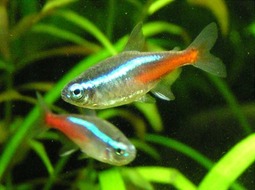
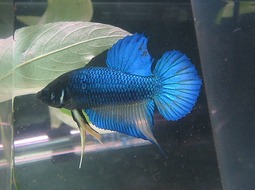
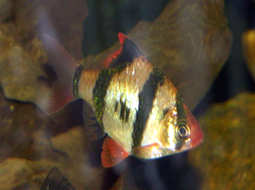
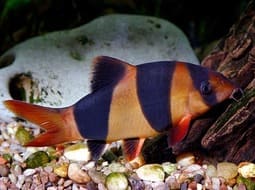
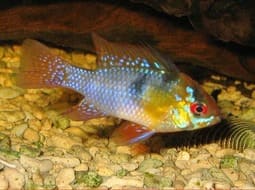
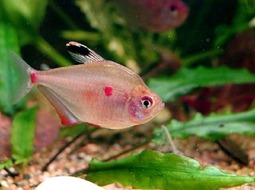

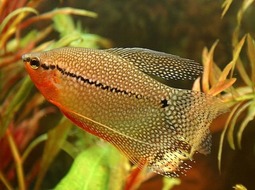
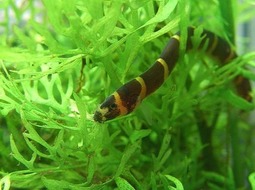

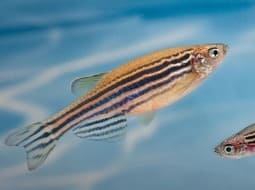
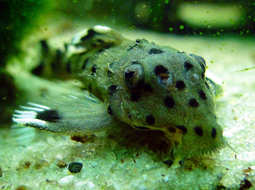

.jpg)

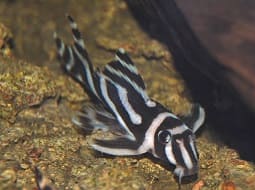
.jpg)
